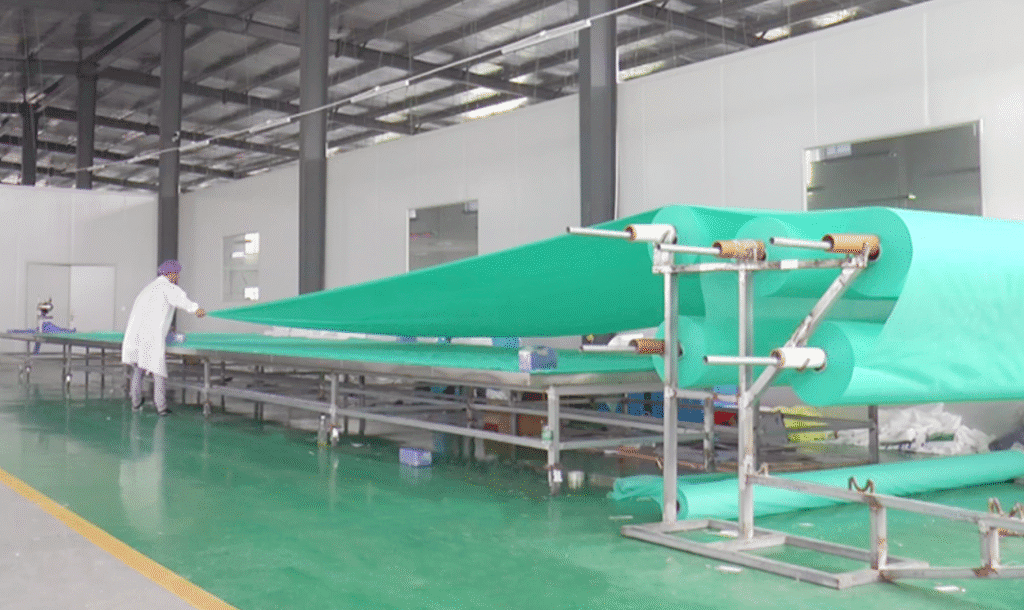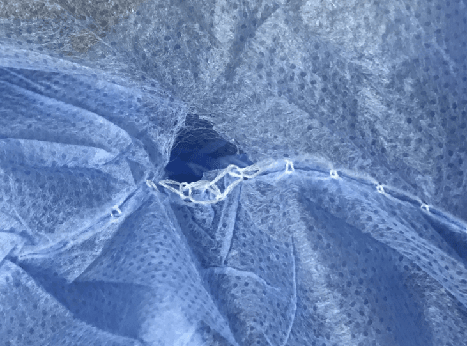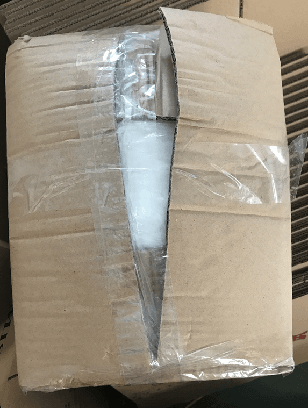In the past few years, non-woven personal protective equipment(PPE) products played a very important role in COVID-19 Fight. But we still cannot ignore so many cases of virus infection caused by defective protection. This makes us even more concerned about the quality of the protective products we purchased, such as masks and protective clothing.
As a international trade importers, you should be vigilant the quality issues of non-woven PPE products when doing the purchase. Non-woven PPE products include masks, isolation gowns, protective clothing, surgical gowns, shoe covers, sleeve covers and so on. We can see some common quality issues about them as following:
1. Recycled materials
New material non-woven fabrics are made from 100% polypropylene granules, but for lower cost, fabric suppliers may add a percentage of the recycled material, The hazards of doping recycled materials include:
- The fabrics becomes harder and uncomfortable to wearing. In severe cases, there may be some powder falling off, which can irritate the skin.
- Make the product less resistant to pull and easier to damage.
- These recycled materials may contain some formaldehyde due, which can irritate wearers’ skin and eyes, even cause some headaches.
Generally speaking, it is difficult for people to identify the material by seeing and touching if the recycled component is less than 20% , and be deemed to has little effect on quality. But if the proportion of recycled materials is higher, it will cause a decrease for the quality of non-woven fabric products.
2. Insufficience in weight and size

- Your non-woven fabric manufacturers may purchase fabrics with lower weight than required to reduce cost. The weight we usually refer to is for the weight of per square meter of non-woven fabric material. Generally, the supplier will purchase raw materials within 1-2 weeks after you place the order. If necessary, the supplier can be requested to send us fabric samples for confirmation. A circular fabric sampler is used for measuring. The volume for each cutting piece is 100 c㎡, with a diameter of 112mm. It is paired with an electronic scale with a protective cover to weigh the weight, and then multiplied by 100 to obtain the weight per square meter. Generally, it is more accurate to take 5-10 pieces and calculate the average for referring.
- Sometimes size errors are not made by the factory on purpose. Size errors may happened due to human behaviors in cutting and sewing. In the testing of non-woven products, especially clothing products, a tolerance of ± 2cm is generally considered acceptable. If the size is too small, it will cause inconvenience in putting on and taking off, and if the size is too large, it will cause box expansion, which will also increase transportation costs.

3.Leakage
Leakage is the most common quality issue in non-woven fabric products. This is mainly related to the usage of machines and the techniques of workers. For some urgent delivery orders, workers are more likely to have poor seams in order to rush the goods. Generally, factories can trace it back to specific personnel and ask to rework.


4. Printing errors for packaging
Packaging is often overlooked by factories in the whole production process. Occasionally, there may be situations which the product has been finished but the packaged is not customized, or the label is forgotten. Of course, printing errors are often occurred. When we have placed an order and provided the printing requirements to the supplier, the supplier will usually provide us with a printed sketch after layout for confirmation within a week. At this time, we need to check each character and pattern carefully to ensure that there are no problems with the printing content.
5. Package Expansion

Due to slight differences in folding methods, each supplier may provide different box specifications during the initial order placement. Considering warehousing requirements, we have to require the box specifications must be the same, so standardizing the folding method is necessary. Box expansion usually occurs when cooperating with a new supplier. On the one hand, the new supplier lacks experience in the product and has insufficient estimation of the folding thickness. On the other hand, the fabric purchased by the new supplier may be different which results in thickness deviation after folding and causing box expansion. The problem of container expansion mainly lies in increasing costs. After expanding the box, it will become more fragile, and any slight carelessness during transportation can lead to damage. At the same time, the same container can hold fewer quantities which resulting in an increase in average transportation costs. Expanding box is a very troublesome issue for buyers during the purchase process of non-woven fabric products. It is necessary to communicate clearly with the factories in the exporting country in advance.

